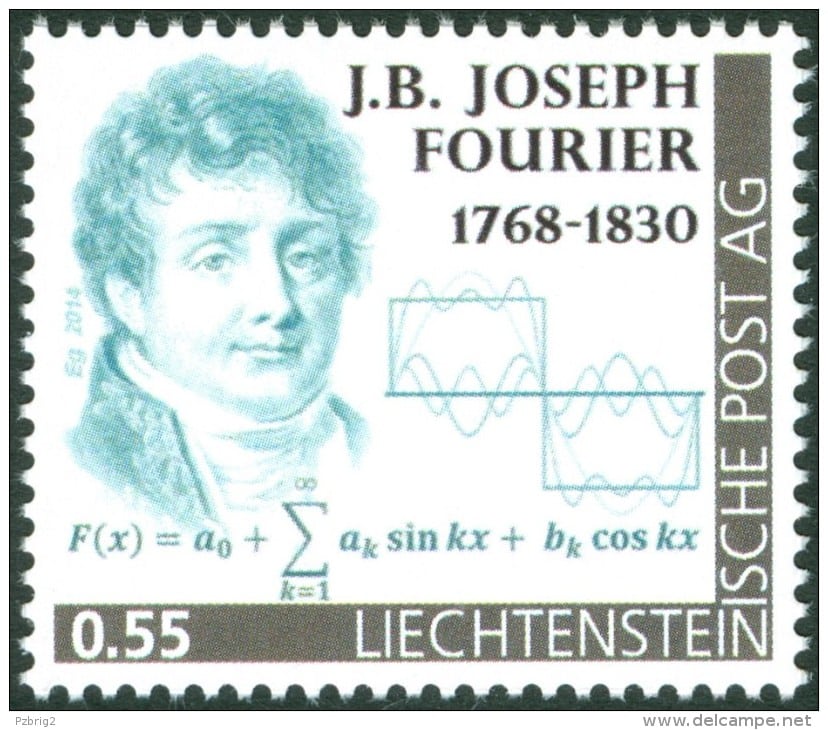That’s Maths: French physicist’s study of heat conduction led him to analyse why Earth was so warm.
Joseph Fourier’s idea that the Earth’s atmosphere acts like an insulator is the first formulation of what we now call the greenhouse effect.
March 21, 2109

Jean-Baptiste Joseph Fourier, French mathematician and physicist, was born in Auxerre, 251 years ago today. He is best known for the mathematical techniques that he developed in his analytical theory of heat transfer. Over the past two centuries, his methods have evolved into a major subject, harmonic analysis, with widespread applications in number theory, signal processing, quantum mechanics, weather prediction and a broad range of other fields.
In his mathematical theory of heat conduction, Fourier based his reasoning on Newton’s law of cooling, with the flow of heat between two adjacent particles being proportional to the difference in temperature. He wrote that “heat, like gravity, penetrates every substance of the universe, its rays occupy all parts of space”. He established the fundamental equation that governs the diffusion or spreading out of heat, and solved it by using the infinite series of trigonometric functions that we now call Fourier series.
The intensity of the warming effect depends on the concentration of the radiatively active gases, called greenhouse gases
Fourier published his work on heat flow in 1822 in his book Théorie analytique de la chaleur (The Analytical Theory of Heat). He claimed that any function, even one with wild variations and jumps in value, can be represented by a series of sine waves. This claim gave rise to great controversy and even Joseph-Louis Lagrange, a mathematical giant, found it incredible. Although further conditions are required to justify Fourier’s observation, it was essentially correct and was a great mathematical advance.
Discovery of the greenhouse effect
Fourier was the first person to study the Earth’s temperature from a mathematical perspective. He examined variations in temperature between day and night, and between summer and winter, and concluded that the planet was much warmer than a simple analysis might suggest.
Fourier calculated that it would be much colder than it is if the incoming radiation from the sun were the only warming effect. His idea that the Earth’s atmosphere acts like an insulator is the first formulation of what we now call the greenhouse effect. However, he did not use that term, which first appeared in the work of Swedish meteorologist Nils Gustaf Ekholm around 1900. The energy from the sun peaks in the visible range and the atmosphere is transparent to this radiation, which passes through and warms the land and the oceans. They in turn radiate their energy as infra-red radiation. Some gases in the atmosphere (mainly water vapour and carbon dioxide) strongly absorb this energy and re-emit it, partly upward and partly downward to warm the surface.
The greenhouse effect is essential for sustaining life on Earth. The intensity of the warming effect depends on the concentration of the radiatively active gases, called greenhouse gases. Human activities, mainly the burning of fossil fuels, have increased their concentrations and the result is a warming of the atmosphere. There is now widespread concern that the warming will have catastrophic consequences if it is not arrested or reversed.
Irish link
John Tyndall, born in Leighlinbridge, Co Carlow, conducted a series of experiments in the 1850s to measure precisely how infra-red radiation is absorbed by gases. He tested several gases and vapours, and found that while pure elements such as oxygen and nitrogen have little effect, more complex molecules are strong heat absorbers.
Tyndall showed that water vapour, carbon dioxide and ozone are strong absorbers of heat radiation. He speculated how changes in water vapour and carbon dioxide are related to climate change. This is what we now call the enhanced greenhouse effect. He realised that the strongest effect was from water vapour, without which “the Earth’s surface would be held fast in the iron grip of frost”. I leave you to ponder where the frost might come from.
Peter Lynch is emeritus professor at UCD School of Mathematics & Statistics – He blogs at thatsmaths.com
Image courtesy: https://abakcus.com/
